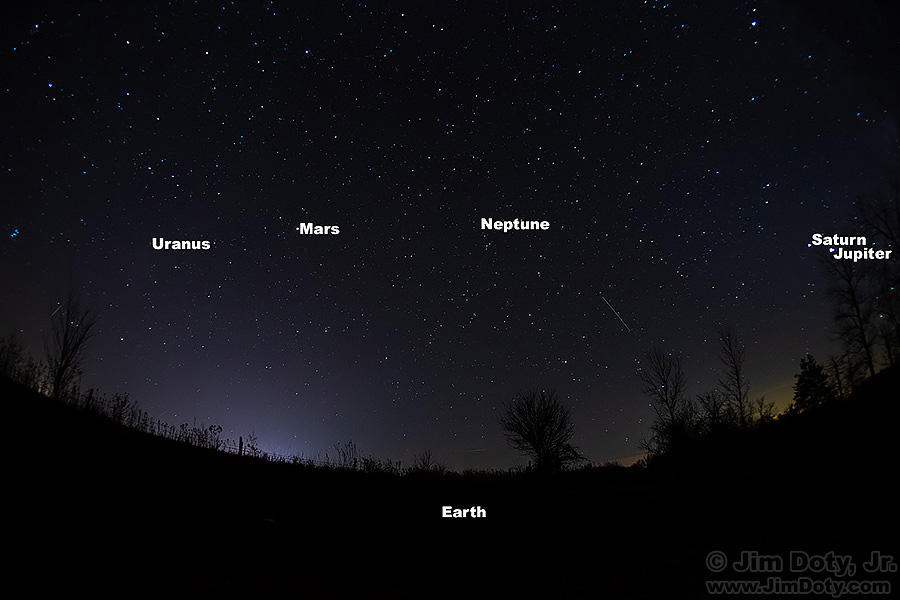
When I read at various astronomy related web sites that it was possible to see all of the naked eye planets in one day on or around November 16, 2020. I decided to try and photograph all of them, along with the moon and sun. As an added bonus I would photograph Uranus. It is not visible to the naked eye but easy to photograph with an ordinary camera and lens with a long exposure. Neptune was also out but I thought it would be too faint to pick up in a long exposure. I was wrong. To my surprise and joy, Neptune showed up as a tiny streak of light on my images.
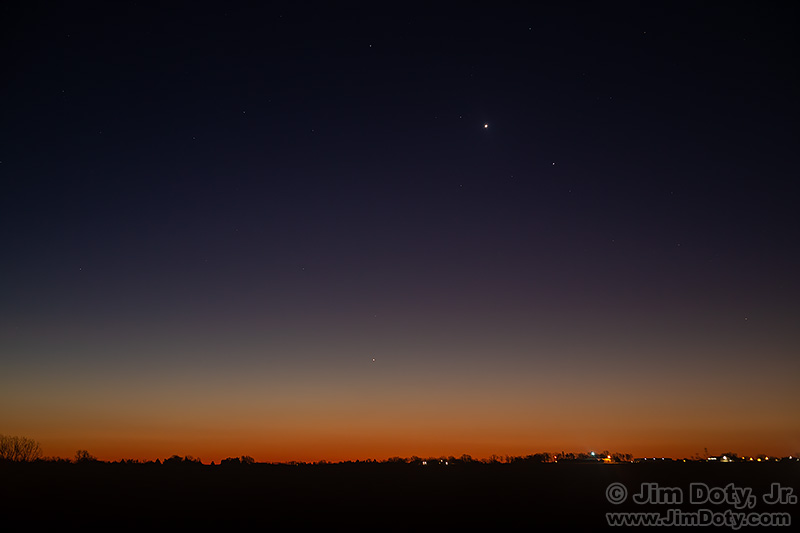
I began in the morning with Venus and Mercury.
You can click on all the photos in this article to see a larger size. In all the captioned photos, the planet is immediately to the left of the first letter in its name.
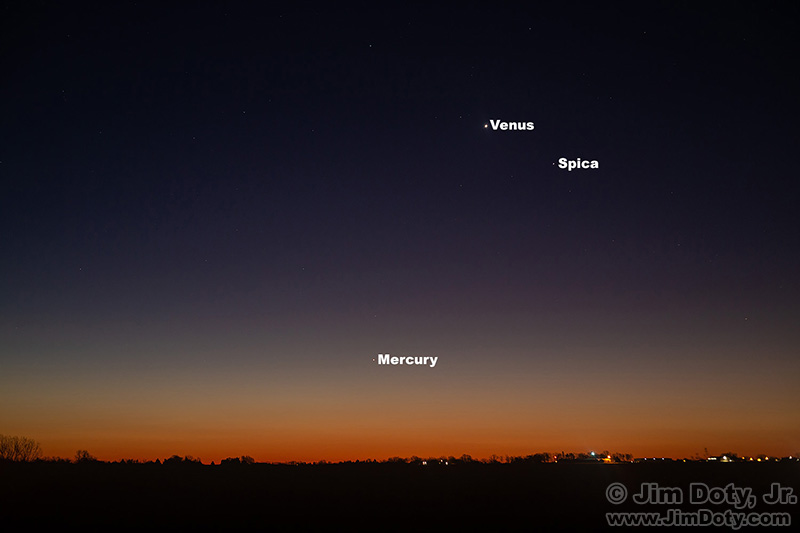
Mercury was just above the horizon and Venus was higher up in the early morning light.
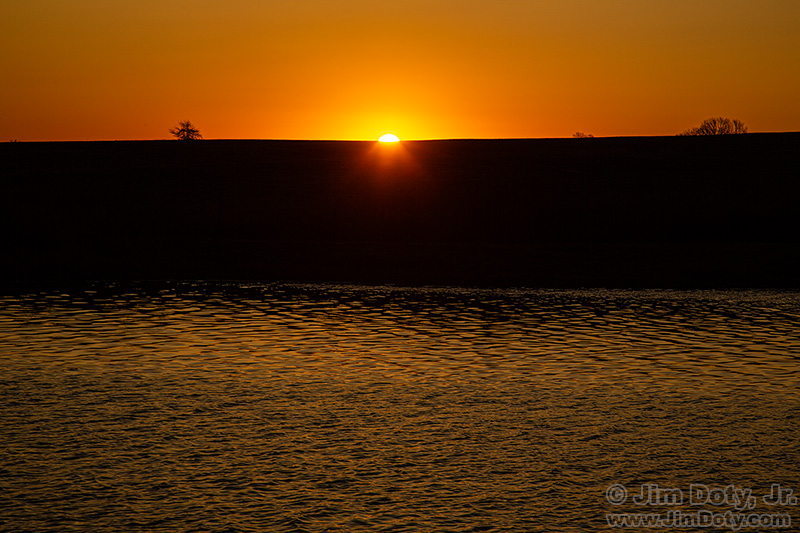
I drove to nearby Lake LaShane and waited for sunrise.
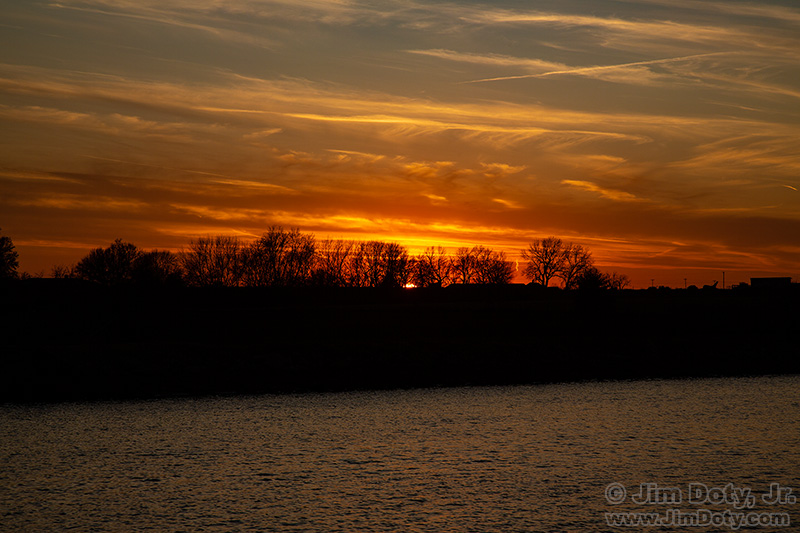
I also wanted to catch sunset at the end of the day.
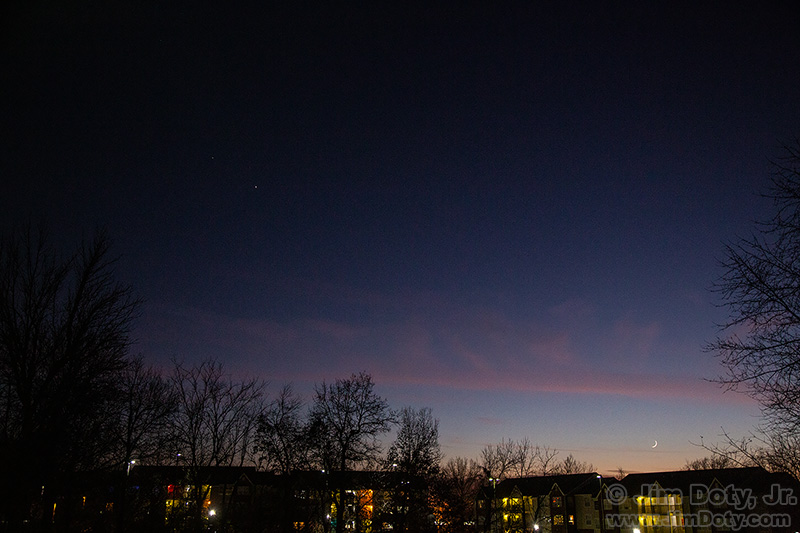
My next goal was to capture the sliver moon before it set. Saturn and Jupiter were up and to the left.
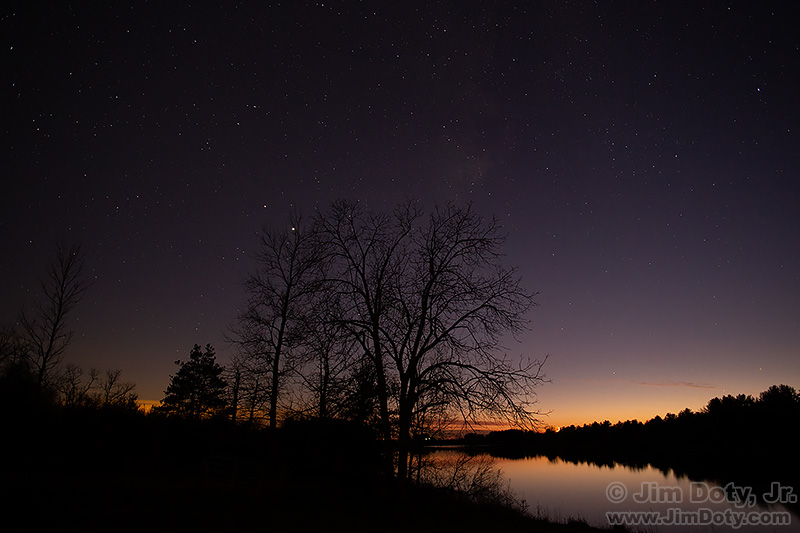
My next stop was Lake LaShane to get a photo of Saturn and Jupiter.
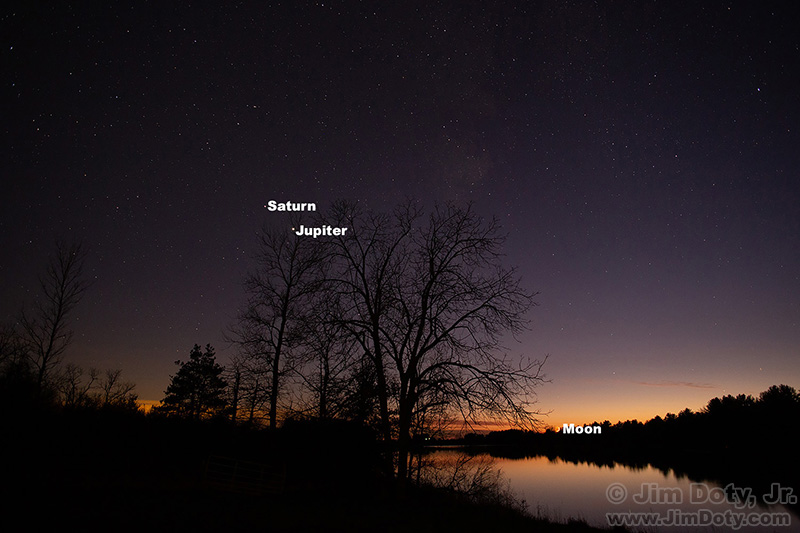
I arrived right before the Moon set behind a row of trees, so I had another chance to include the Moon with Saturn and Jupiter.
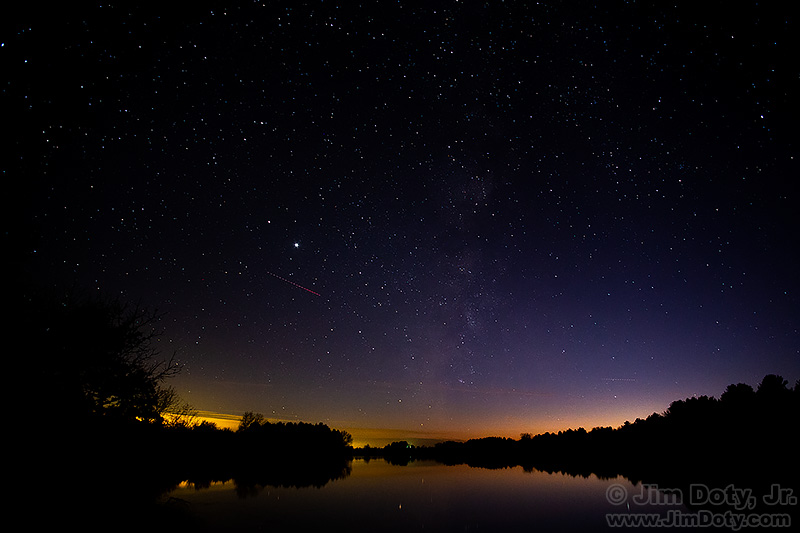
I picked a different spot on the lake to get Saturn and Jupiter over the water. There was still a little bit of nice sunset glow in the southwest.
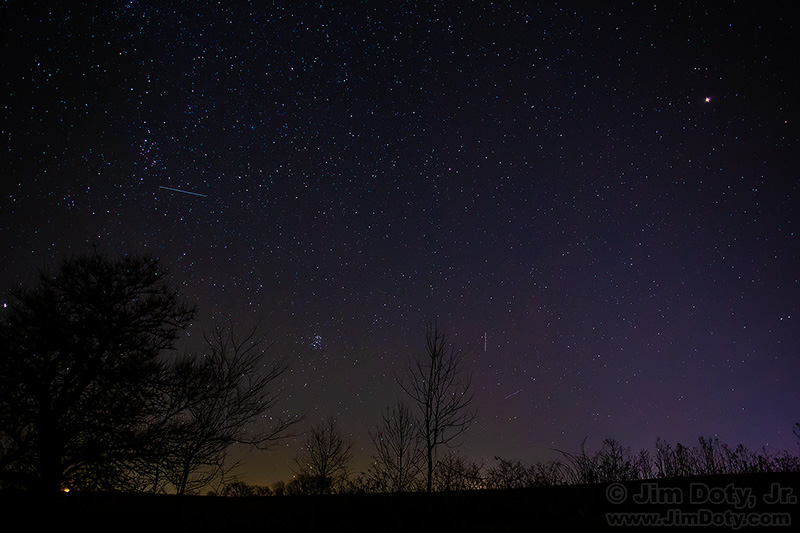
I pointed my camera to the east to get Uranus and Mars.
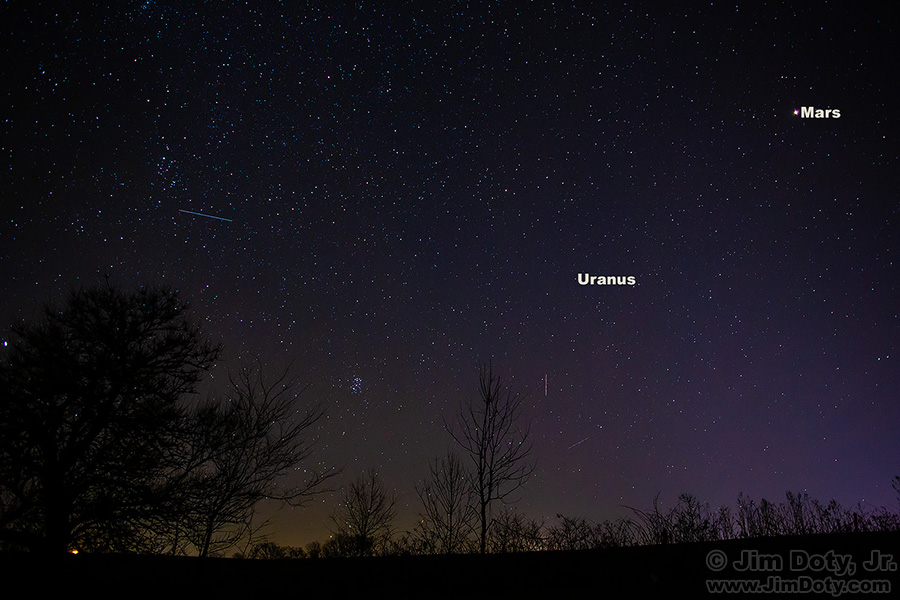
In addition to Mars and Uranus, the Pleiades star cluster is to the left near the trees. Several panes were crossing the night sky.
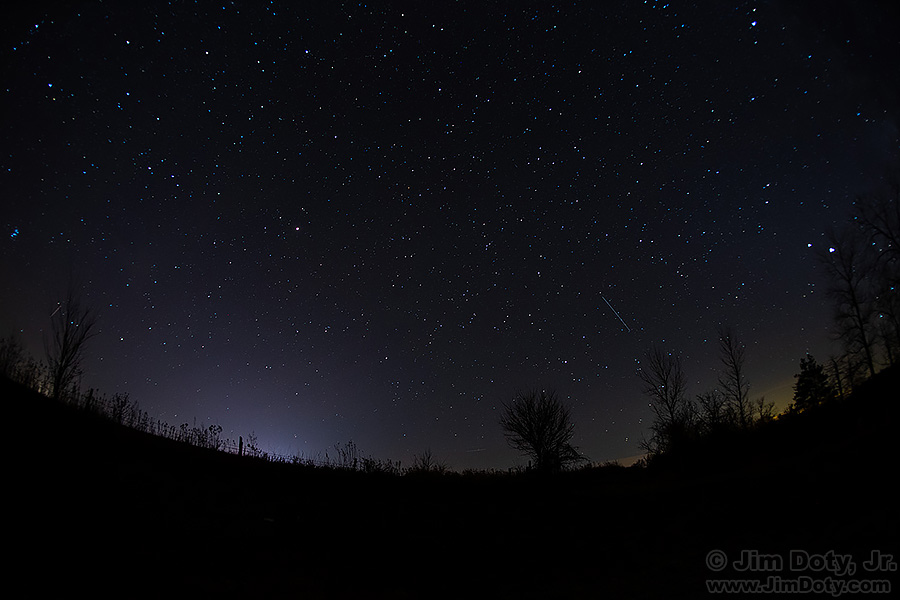
I put a 15mm lens on my camera to get a super wide angle shot of all the planets.
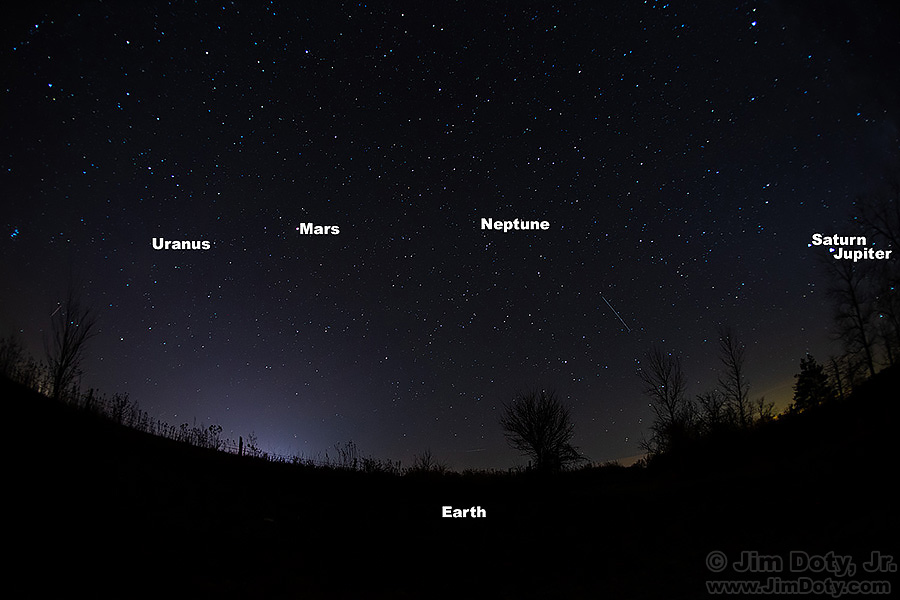
Counting Earth, I ended up with 6 planets in this photos. Add Venus and Mercurry from my early morning photos and I ended up with 8 planets.
Neptune was a happy surprise. I thought it would be too faint to show up in my image, but it was there as a tiny streak of light. I looked up the position of Neptune in Stellarium (a free download) at the date and time of my photogrpah, zoomed in to check the stars immediately around Neptune, and everything was an exact match for the stars and Neptune in my photograph.
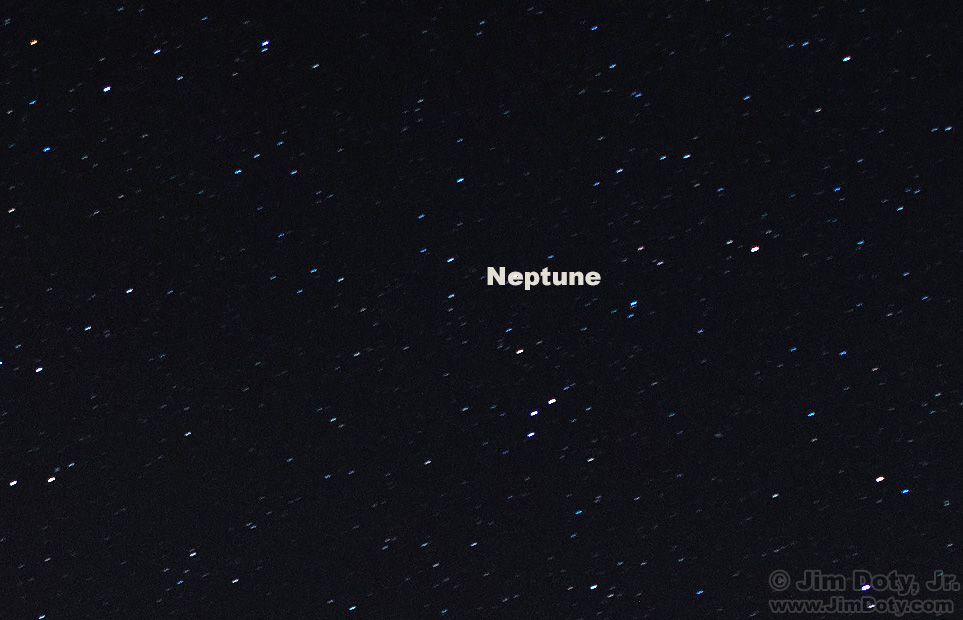
Neptune disappears when you shrink a full sized image down to a web sized image suitable for the internet. This is Neptune (the tiny, faint streak of light just to the left of the letter N) and a small area of the sky around Neptune cropped from the original image. Neptune and the stars are little streaks of light due to the long exposure time.
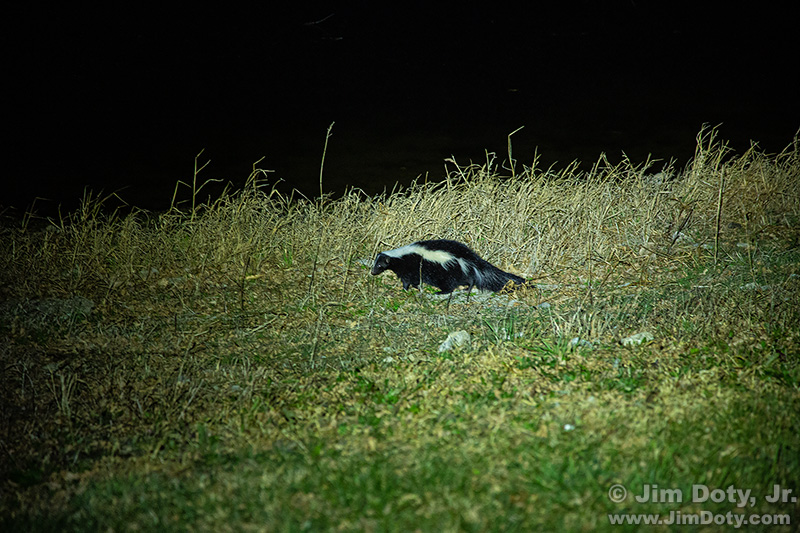
I was not alone while I was taking night sky pictures at Lake LaShane.
